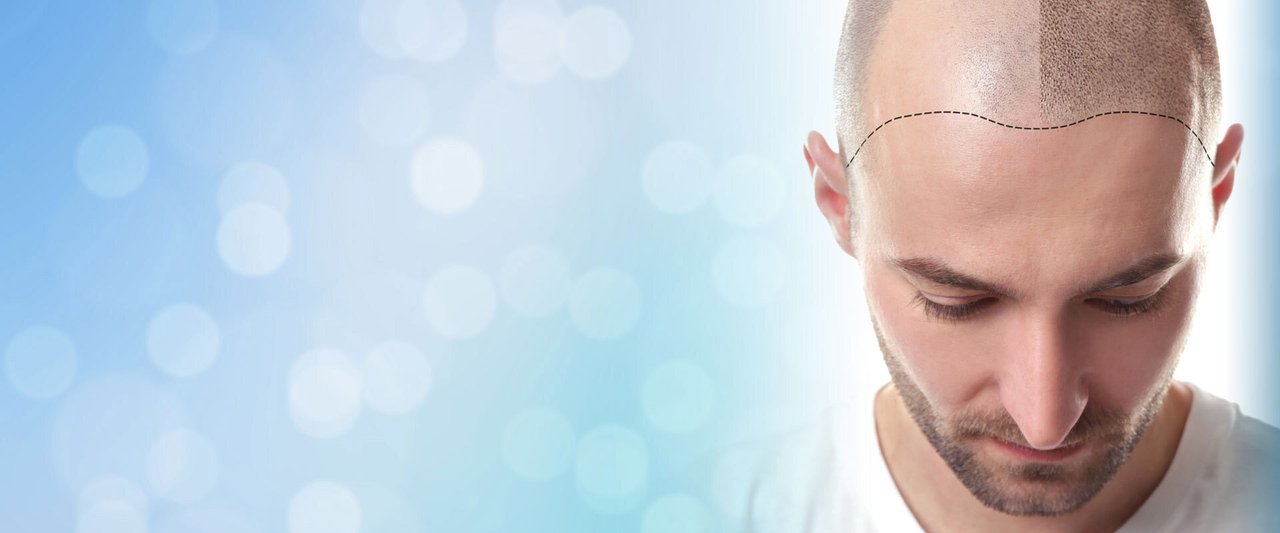Embarking on a hair transplant journey in Riyadh is a significant decision, driven by the desire to restore not just hair, but also confidence and self-image. Understanding the "before and after" aspects of this transformative procedure is essential for managing expectations and appreciating the gradual yet profound changes that unfold. If you're struggling with hair loss, a hair transplant in Riyadh could be the permanent solution you've been looking for.
The "Before": Setting the Stage
Before a hair transplant, individuals typically experience varying degrees of hair loss, ranging from a receding hairline and thinning at the crown to more extensive baldness. The "before" picture often captures these areas of concern, which can significantly impact an individual's appearance and self-perception. During the initial consultation at a Riyadh clinic, the surgeon meticulously assesses the hair loss pattern, the quality and density of the donor hair (usually at the back or sides of the head), and the patient's overall health. This stage is crucial for designing a natural-looking hairline and determining the number of grafts required, forming the blueprint for the "after" results.

The "Immediately After": Initial Appearance and Recovery
Immediately following a hair transplant procedure in Riyadh, patients will notice distinct changes. The treated areas, both the donor and recipient sites, will exhibit some redness, swelling, and small scabs around each transplanted graft. This is a completely normal part of the healing process.
- Donor Area: If the Follicular Unit Extraction (FUE) method was used, the donor area will have tiny, dot-like scabs where individual follicles were extracted. These are typically very small and heal quickly, becoming virtually undetectable once the surrounding hair grows. For Follicular Unit Transplantation (FUT), a linear incision will be present in the donor area, which is usually sutured and can be easily concealed by the existing hair.
- Recipient Area: The recipient area, where the new hair grafts have been implanted, will appear red and may have a speckled look due to the tiny incisions and the scabs forming over the newly placed follicles. Swelling, particularly around the forehead and eyes, can occur within the first few days but typically subsides rapidly.
Patients are usually discharged on the same day with detailed post-operative care instructions. This includes guidance on gentle washing, avoiding strenuous activities, and protecting the scalp from direct sunlight. The first few days are critical for graft survival, and adhering to these instructions is paramount for optimal results.
The "After": The Hair Regrowth Timeline
The journey from the "immediately after" to the "final after" is a process that requires patience and understanding of the natural hair growth cycle.
- Week 1-2: Initial Healing and "Shock Shedding": The initial swelling and redness will gradually diminish. Around the second to fourth week, a phenomenon known as "shock shedding" often occurs. This is a normal and expected part of the process, where the transplanted hair shafts fall out. It's important to remember that this does not indicate a failure of the transplant; rather, it's the hair follicles entering a resting phase before new growth begins. The follicles themselves remain safely implanted.
- Months 1-3: Dormancy and Early Growth: Following shock shedding, the transplanted follicles enter a dormant phase. Around the third to fourth month, new hair growth typically begins to emerge. Initially, these hairs may be fine, thin, and lighter in color. This is the exciting first sign of the procedure's success, even if the density is not yet significant.
- Months 4-6: Noticeable Growth and Thickening: Between months four and six, most patients begin to see a more noticeable improvement in hair growth and density. The newly grown hairs start to thicken, darken, and become more robust. This is often the phase where individuals start feeling more confident about their appearance as the results become increasingly apparent.
- Months 6-12: Significant Density and Maturation: From six months to a year, the transplanted hair continues to grow, thicken, and mature. The density significantly improves, and the hair begins to blend seamlessly with the existing natural hair. The overall coverage becomes more substantial, and the hairline takes on a natural and aesthetically pleasing shape.
- Months 12-18: Final Results: By 12 to 18 months, most patients will have achieved their full and final results. The transplanted hair will have reached its optimal length, thickness, and texture, completely mimicking natural hair growth. The "after" photos at this stage truly showcase the transformative power of a successful hair transplant, revealing a fuller, more youthful appearance.
Factors Influencing the "After" Picture
The quality and naturalness of the "after" results in Riyadh depend on several factors:
- Surgeon's Skill and Experience: The expertise of the hair transplant surgeon in designing the hairline, extracting grafts without damage, and implanting them at the correct angle and density is crucial for natural-looking results.
- Patient's Hair Characteristics: The texture, color, and natural curl of the patient's existing hair can influence the final aesthetic outcome.
- Donor Area Quality: A healthy and sufficient donor area is essential for providing enough viable grafts.
- Adherence to Post-Operative Care: Following the surgeon's instructions diligently ensures optimal healing and graft survival.
- Individual Healing Response: Each individual's body heals at a different pace, which can influence the timeline of results.
Riyadh's leading clinics are committed to delivering natural, long-lasting results that significantly enhance a patient's appearance and self-confidence. The journey from "before" to "after" is a process of gradual transformation, culminating in a restored hairline and a renewed sense of self.




Comments